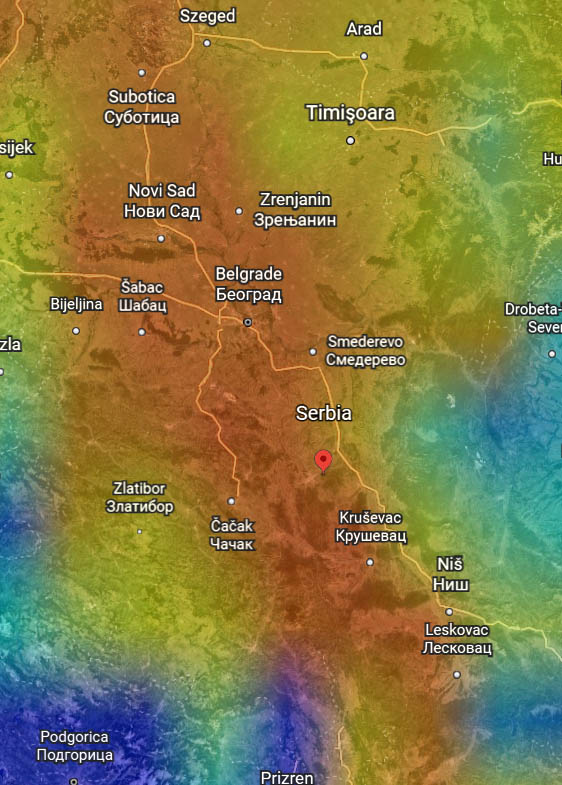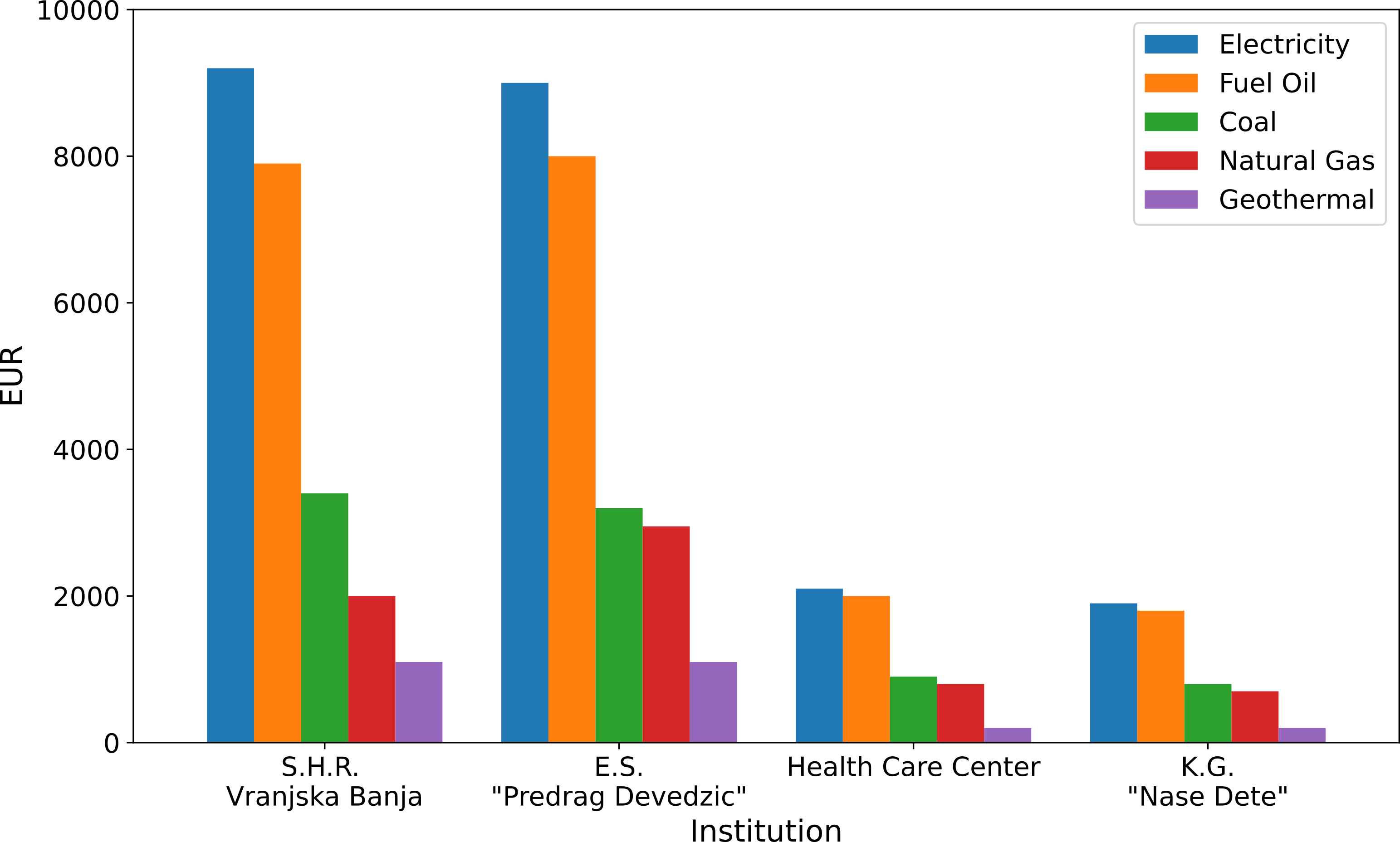Ljubica P. Eror and Milinko Ž. Perić*
University of Novi Sad, Faculty of Sciences, Department of Chemistry, Biochemistry and Environmental Protection, 21000 Novi Sad, Serbia,
Emails: ljubicaeror192@gmail.com; milinkoperic98@gmail.com
*Correspondence: Milinko Ž. Perić, milinkoperic98@gmail.com
– published as website article, to be included in the Volume 1, Issue 1 of the AIDASCO Reviews –
ABSTRACT: Geothermal energy is of particular importance for the natural resources of the Republic of Serbia. Geothermal energy is renewable because various processes continuously produce heat inside the Earth. In the Republic of Serbia, geothermal waters – thermal springs are one of the most frequently used renewable energy sources. The reason for this is that the Republic of Serbia is oriented towards the development of tourism, so hydro geothermal potential enables the expansion of the tourist offer through the improvement of existing and the opening of new health centers, spas, sports, and recreational centers. Also, geothermal energy’s monthly heating costs are lower than non-renewable sources.
Keywords: Geothermal energy; Springs; Water
1. Introduction
Natural resources’ use, economic application, and valorization should be planned and purposefully controlled. Regardless of the type, structure, and individual quantities, they are the basis for the Republic of Serbia’s upcoming economic development [1]. Renewable energy sources contribute to preserving the environment and reducing dependence on the import of energy raw materials and electricity, so it is necessary to maximize their use. Renewable energy sources include wind, solar, water, and geothermal energy [2].
Geothermal energy is of particular importance for the natural resources of the Republic of Serbia. Geothermal energy is a renewable source of energy because heat is continuously produced inside the Earth by various processes: the decay of radioactive elements found in rocks and exothermic chemical reactions. It has a great advantage because it is a cheap, stable, and permanent energy source [1].
In the Republic of Serbia, geothermal waters – thermal springs are one of the most frequently used renewable energy sources. The reason for this is the fact that the Republic of Serbia is oriented towards the development of tourism, so the use of hydrogeothermal potential enables the expansion of the tourist offer through the improvement of existing and the opening of new health centers, spas, sports and recreational centers [3]. The two hottest geothermal water sources are Vranjska and Jošanička Banja [4].
2. Geothermal sources in the Republic of Serbia
With the increase in fossil fuel energy consumption, conventional energy reserves have been reduced to a minimum, and environmental conditions and quality have deteriorated. In order to reduce CO2 emissions and protect the environment, it is necessary to increase the use of renewable energy sources. Geothermal energy is an excellent resource for electricity production compared to other renewable energy sources because it can be used 24h without interruption [4]. The geothermal potential of the Republic of Serbia includes numerous natural springs with a water temperature higher than 15 °C.

Of the total number of geothermal sources, 60% are sources with temperatures from 20 °C to 40 °C, 20% are sources with temperatures from 30 °C to 40 °C, and about 20% are sources with temperatures higher than 40 °C.
The springs with the most elevated temperatures are located in Vranjska Banja (96 °C), Jošanička Banja (78 °C), Sijarinska Banja (76 °C), Kuršumlijska Banja (68 °C), and Novopazarska Banja (54 °C) [4]. Based on available measurement data, Serbia’s average density of geothermal heat flow ranges from 80 mV/m2 to 120 mV/m2. The highest values were recorded in the Pannonian Basin and the Vardar Zone (Fig. 1) [5], while in Figure 1 we present the heat flow map of Serbia, generated using the heat flow data by Lucazeau (2019) [6] and Google Earth.
In Serbia, geothermal energy is mainly used for balneology, sports, and recreation [5]. The potential capacity of geothermal energy in the Republic of Serbia is about 800 MW, which ranks Serbia among the 35 best countries in the world, unfortunately, only about 12% (about 100.9 MW) is exploited for energy purposes [6]. This exploitation of geothermal energy is not considered rational because Serbia is rich in hyperthermal sources that can be used multiple times [5].
2.1. Vranjska Banja
Geothermal springs are located on the eastern edge of the Vranje basin, they have sulfurous thermal water, while some springs have the character of mild saline-alkaline waters. Today, this area has nine active wells: Upper well, A1–A3, B1a–B1b, B2, all old wells, and two new wells (VG-2 and VG-3). These hyperthermal wells have different yields (0.5–26.0 L/s), depths (7–1603 m), and temperatures (78–111 °C). Based on the analysis of all the geothermal sources of Vranjska Banja, a thermal equivalent of 62.4 MW was determined, with a total energy of approximately 617.5 TJ/year.

Today, these waters are used for various purposes. In addition to balneotherapy, which is the most common (Special Rehabilitation Hospital Vranjska Banja), geothermal water is also used for heating communal and public buildings and has applications in production processes. All consumers use geothermal water indirectly through heat exchangers, where this model of hyperthermal water from the source to the end users does not allow temperature regulation. The monthly costs of geothermal heating are approximately 2.5–8.0 times lower than other heating sources. It is evident that the use of geothermal heating has economic benefits compared to other sources (Fig. 2) [5].
2.2. Jošanička Banja
The geothermal springs are located in the Spa Park and have a water flow of 14.1 to 15.4 kg/s, with a temperature of 70.1 °C to 78.7 °C. The spa also has a hydrogeological well with four sources and a water flow of 38 kg/s, the temperature of which is up to 76 °C. The water of Jošanička Banja is characterized by low mineralization with a high concentration of sodium ions and a high silicic acid content. The estimated thermal power of the hottest spring of Jošanička Banja (input 130 °C, output 78.7 °C), whose water flow is 15.4 kg/s, is 3.31 MW, while its thermal energy is 104.2 TJ/year. The estimated total thermal energy of the springs in Jošanička Banja is 213.95 TJ/year, with a total thermal power of 6.79 MW. In Jošanička Banja, geothermal water is used to heat the greenhouse. The geothermal potentials of all springs of Jošanička Banja are shown in Table 2 [2].
Table 1. The geothermal potential of the springs of Jošanička Banja [2]
| Geothermal sources | Capacity (MWt) | Energy use (TJ/year) |
|---|---|---|
| Jošanička Spa - Spa park | 3.31 | 104.2 |
| Jošanička Spa - Slanište | 2.85 | 89.7 |
| Jošanička Spa - B1–4 | 0.63 | 20.0 |
3. Conclusions
In thermal spas, very little attention is paid to energy efficiency, so large amounts of hot water are discharged as useless. However, heat pumps can extract enough energy from them to heat the space or the pool. Conducted studies show numerous advantages of using geothermal systems. Analysis confirms the profitability of using geothermal energy and reveals numerous environmental benefits (safe heating, low CO2 emissions) compared to other energy sources. Therefore, the optimal solution is the use of geothermal water for heating. Also, the monthly heating costs using geothermal energy are lower compared to using non-renewable sources.
Acknowledgments: The authors acknowledge the support of “Association for the International Development of Academic and Scientific Collaboration” – AIDASCO.
References
- Popović, I. Uticaj energetskih izvora na životnu sredinu u Republici Srbiji. Fakultet tehničkih nauka u Čačku. Tehnika i informatika (2013/2014).
- Ristić, D.; Vukoičić, D.; Nikolić, M.; Milinčić, M.; Kićović, D. Capacities and energy potential of thermal-mineral springs in the area of the Kopaonik tourist region (Serbia). Renewable and Sustainable Energy Reviews. 2019, 102, 129–138.
- Jovanović, O., Žarković, D., Baltić, J. Mogućnost korišćenja geotermalnih izvora u Srbiji. Ecologica. 2013, 72, 731–736.
4. Lee, H.C.; Chang, C.T. Comparative analysis of MCDM methods for ranking renewable energy sources in Taiwan. Renewable and Sustainable Energy Reviews. 2018, 92, 883–896. - Milovanović-Pešić, A.; Brankov, J.; Denda, S.; Bjeljac, Ž.; Micić, J. Geothermal energy in Serbia – Current state, utilization and perspectives. Renewable and Sustainable Energy Reviews. 2022, 162, 112442.
- Valjarević, A.; Srećković-Batoćanin, D.; Valjarević, D.; Matović, V. A GIS-based method for analysis of a better utilization of thermal-mineral springs in the municipality of Kursumlija (Serbia). Renewable and Sustainable Energy Reviews. 2018 92, 948–957.
